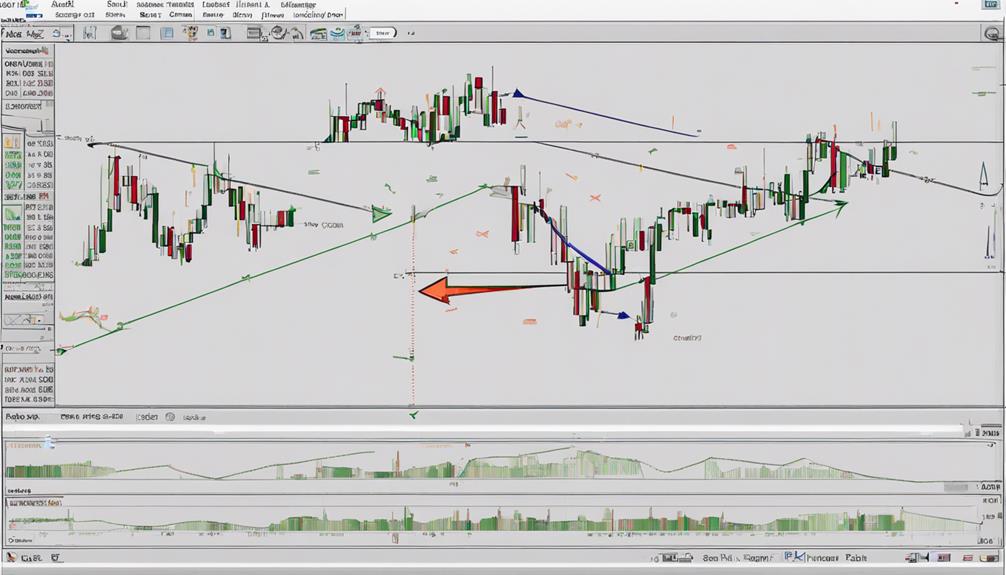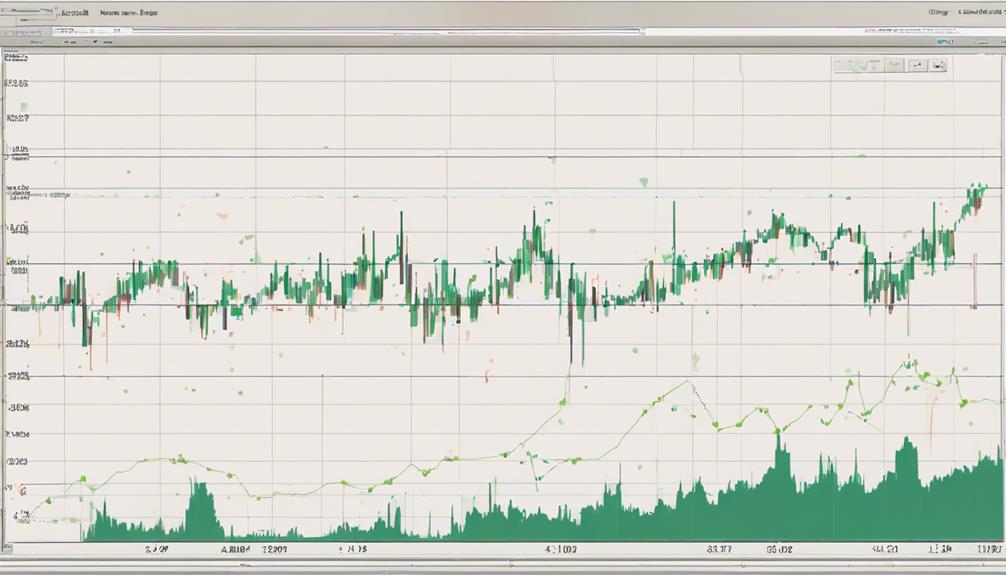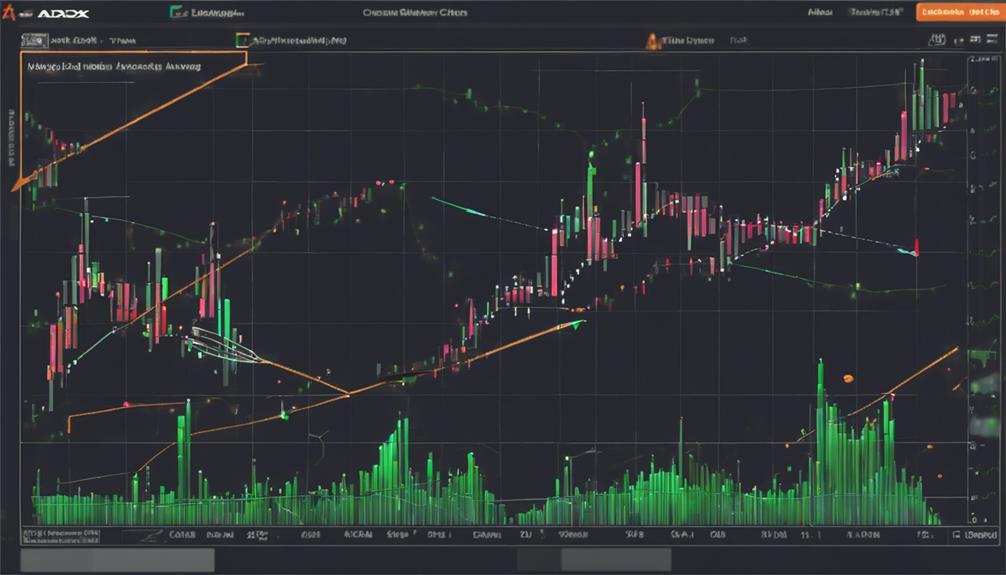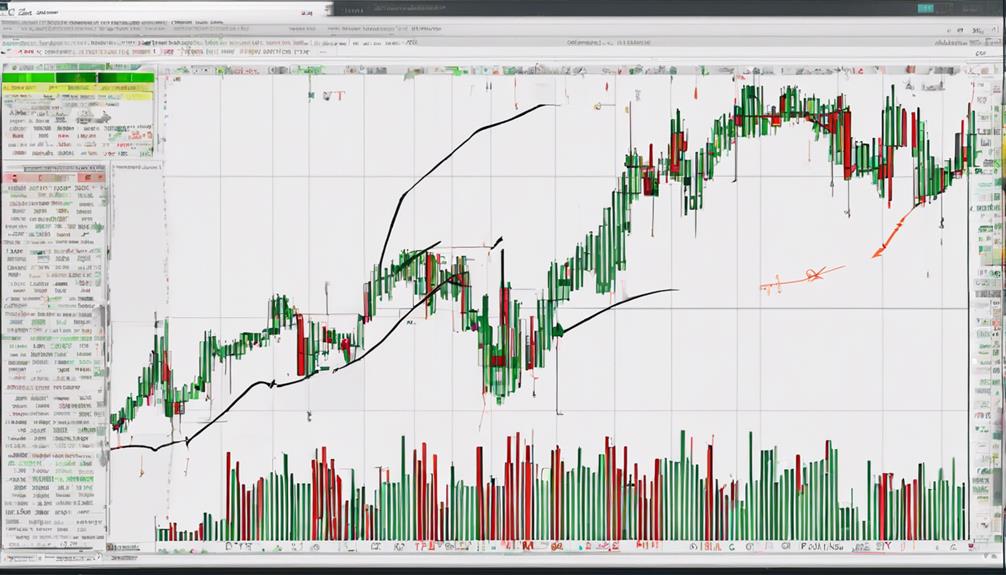With its ability to gauge trend strength, signal potential changes, and identify market conditions, ADX offers traders a robust tool for enhancing their trading strategies.
The insights provided by ADX can lead to improved decision-making, more accurate trade entries and exits, and better risk management.
By delving deeper into how ADX functions and its practical applications in trading, traders can unlock its full potential to elevate their trading performance.
Understanding ADX Basics
In the realm of technical analysis for trading, a fundamental concept that traders must grasp is the essence of ADX, which quantifies trend strength through the measurement of price range expansion over a defined period, typically set at 14 bars.
The ADX indicator provides traders with insights into the strength of a trend by generating values ranging from 0 to 100. These values are non-directional and serve as a crucial tool in filtering trades and assessing trend strength for making informed trading decisions.
Leveraging ADX for Trading Signals

Building upon the foundational understanding of ADX basics, traders can strategically exploit the indicator's quantification of trend strength to generate valuable trading signals.
When leveraging ADX for trading signals, traders can:
- Confirm Entry and Exit Signals: ADX can provide confirmation for entry and exit signals generated by other indicators like RSI, enhancing the overall accuracy of trade timing.
- Filter for High-Probability Trades: Combining ADX with RSI helps traders filter out false signals, enabling them to focus on high-probability trades with confidence.
- Measure Momentum: ADX values above 25 can validate the strength of a trend identified by RSI, offering a comprehensive view of both trend strength and momentum for better decision-making.
ADX in Trend Identification

Quantifying price range expansion over specific periods, ADX plays a crucial role in identifying trend strength in trading strategies. ADX, part of the Average Directional Index (ADX) and Directional Movement Index (DMI), offers insights into the strength of a trend based on ADX readings.
Values above 25 typically signal a strong trend, making it suitable for trend-trading strategies. On the other hand, ADX values between 0-25 indicate weak or absent trends, while values ranging from 25-100 represent varying levels of trend strength.
Peaks in the ADX line visually depict trend momentum, with higher peaks indicating increasing momentum in price action. Understanding ADX can help traders in trend identification, enabling them to make informed decisions about entering or exiting trades based on the strength of the trend.
Enhancing Trading Strategies With ADX

Enhancing trading strategies through the integration of the Average Directional Index (ADX) provides traders with valuable insights into trend strength and momentum, crucial for informed decision-making in the financial markets. ADX enhances trading strategies by:
- Quantifying Trend Strength and Momentum: ADX values ranging from 0 to 100 help traders gauge the strength of a trend and the momentum behind it.
- Indicating Trend Direction and Breakout Opportunities: This indicator complements price analysis by signaling the direction of a trend and potential breakout points, aiding in trade decision-making.
- Identifying Market Transitions and Conditions: ADX assists traders in recognizing transitions from trending to ranging markets, offering guidance on adapting strategies to different market conditions.
Implementing ADX for Improved Performance

Integrating the Average Directional Index (ADX) into trading strategies can significantly enhance performance by providing valuable insights into trend dynamics and market conditions. ADX serves as a crucial tool for assessing trend strength and momentum, allowing traders to make more informed decisions regarding entry and exit points.
By incorporating ADX into trading strategies, traders can effectively differentiate between trending markets and range-bound conditions, enabling them to adjust their approaches accordingly. Moreover, when used in conjunction with indicators like the Relative Strength Index (RSI), ADX can offer a comprehensive view of the market, leading to the identification of high-probability trade setups.
This strategic integration of ADX not only improves the overall quality of trading strategies but also enhances risk management practices. Traders who leverage ADX in their analysis gain a competitive edge by being able to navigate various market conditions with precision and confidence.
How Can the ADX Indicator Improve Your Trading Strategy?
When it comes to improving your trading strategy, there are some essential tips for ADX indicator that can make a significant difference. By using the ADX indicator, you can analyze the strength of a trend and make more informed trading decisions. These tips can help you make the most of this valuable tool.
Frequently Asked Questions
What Are the Advantages of ADX Indicator?
The ADX indicator offers traders a clear advantage by quantifying trend strength, aiding in the identification of strong trends through readings above 25. Its non-directional approach and compatibility with other tools enhance trend analysis and trading strategies.
What Are the Benefits of Adx?
The benefits of ADX include quantifying trend strength, identifying strong trends for trading, offering a non-directional measure from 0 to 100, and indicating trend momentum through peak values. It aids in confirming breakouts and recognizing trend changes.
Is ADX Good for Day Trading?
ADX is indeed suitable for day trading as it aids in confirming trend strength, filtering out market noise, and enhancing trade decision-making by highlighting trend momentum. Combining ADX with other indicators can provide a comprehensive market analysis.
What Is the Best Combination With ADX Indicator?
What is the best combination with the ADX indicator? The ADX indicator pairs well with trend-following indicators like Moving Averages or Parabolic SAR, and can be further enhanced by incorporating oscillators such as RSI or Stochastic for confirmation signals.
Conclusion
In conclusion, the use of ADX in trading can greatly enhance decision-making by providing valuable insights into trend strength, momentum, and market conditions.
By quantifying trend strength, identifying potential trend changes, and validating breakouts, ADX can improve the accuracy of trade entries and exits.
Additionally, ADX serves as a range finder, helping traders adapt their strategies to different market conditions.
By incorporating ADX into trading strategies, traders can optimize performance and manage risks effectively.
